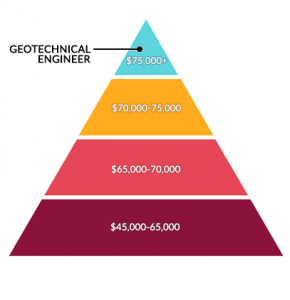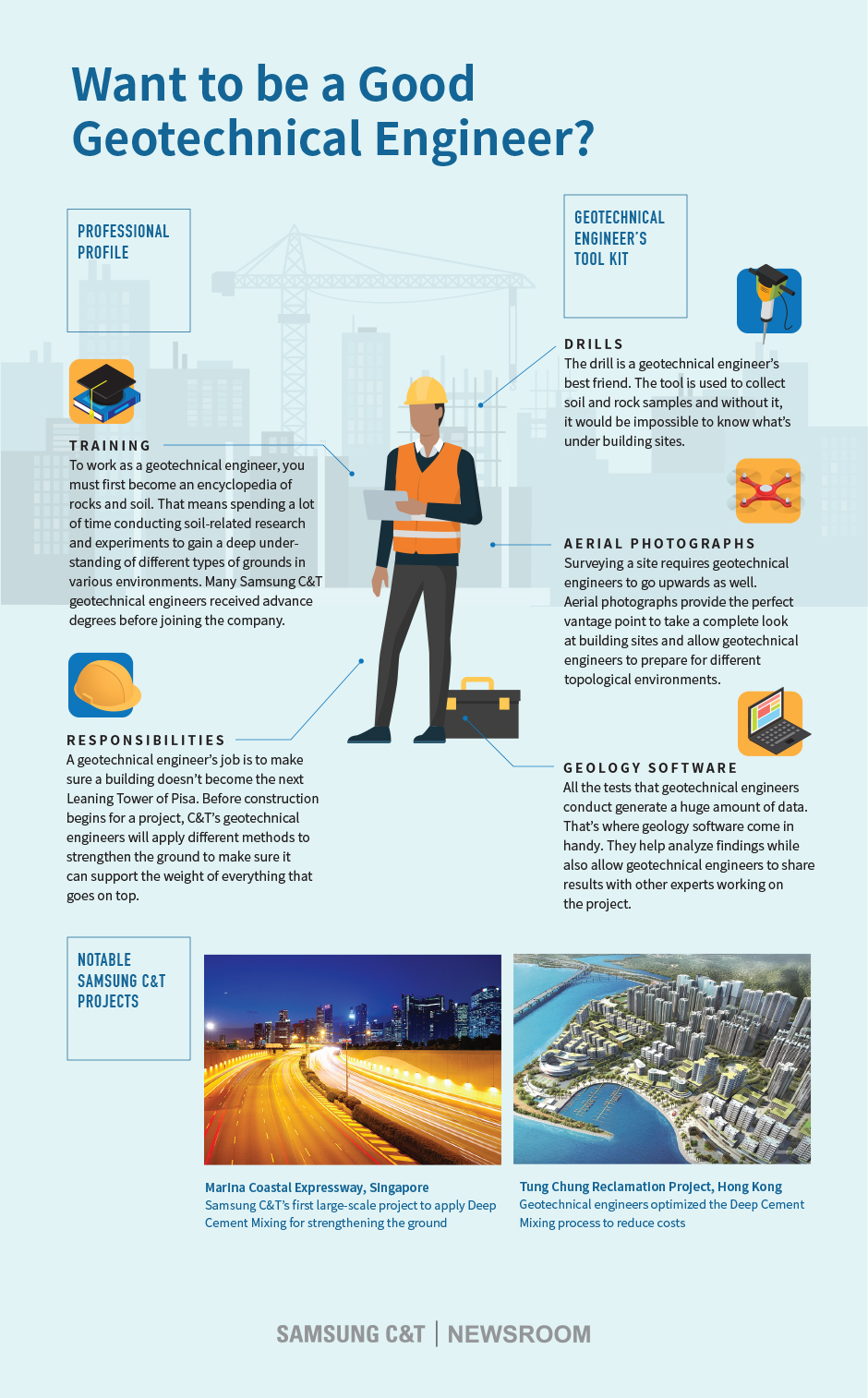Geotheta Fundamentals Explained
Geotheta Fundamentals Explained
Blog Article
The Best Strategy To Use For Geotheta
Table of ContentsThe Geotheta PDFs5 Simple Techniques For GeothetaHow Geotheta can Save You Time, Stress, and Money.Everything about Geotheta
They collaborate with civil engineers, architectural designers, designers, and other experts to incorporate geotechnical factors to consider right into the overall job design and construction procedure. This calls for reliable team effort, sychronisation, and communication to ensure that the geotechnical facets line up with the job purposes and meet regulative requirements.Mining & Materials Design: Concepts of exploration, penetration prices, and factors affecting the option of exploration technique. Blowing up techniques in surface area and underground functions. Mechanical and constant techniques to fragmentation, consisting of longwall shearing and fullface boring.
Integrated evaluation of fragmentation and comminution operations. Used by: Mining & Products Engineering.
A Biased View of Geotheta
Bachelor's level programs in civil, geotechnical, geological, and ecological design generally last four years and include general education and learning courses in English, social science, and the humanities, in addition to programs in sophisticated mathematics, structural geology, and liquid mineralogy. (https://www.tripadvisor.in/Profile/geotheta1)
Geotechnical engineering involves the assessment of the soil and rock conditions at a specific website, and their effects for the growth of that site. As a lot of frameworks depend on the ground for assistance, it is without shock that a comprehensive understanding of the ground problems, and the viability of structure systems, are important to the long-lasting security and efficiency of the structure or framework.
Specialising in the examination of geological formations and ground behavior, geotechnical engineers perform clinical examinations and screening to understand the effect these geological formations may carry the style and construction of building, civil and facilities projects. This know-how is essential for the style and building of structures, roads, tunnels, dams, bridges, and supply of water and sewer systems.
The geotechnical team at Douglas Allies consistently seek advice from with engineers, layout designers, developers, and contractors to make referrals on layout and development proposals to make certain that the developed structures are suitably made for the ground problems. The design of footing systems requires to take into consideration the weight of the structure, the capacity of the ground to sustain that weight with each other with motion tolerances and efficient construction.
The Main Principles Of Geotheta
This job is considerably simplified by the use our Douglas Map geospatial system that makes this information easily obtainable in an easy to use web browser user interface. A geotechnical engineer will certainly direct the boring of boreholes and examination pits to accumulate dirt and various other samples, and likewise examine surface functions and ground direct exposures to form a geotechnical version of the subsurface problems.
Relying on the job kind and ground conditions encountered, lab screening may to name a few things examine toughness, compressibility, reactivity and/or permeability of dirt and rock examples. After this information is gathered and looked at, the outcomes are utilized for a geotechnical design of the website, which is normally offered as areas across the site.

A geotechnical examination basics by nature can only evaluate the ground conditions at the locations drilled or excavated. All-natural variants in dirt and rock problems can take place across a website and between examination places. It is consequently excellent technique that the geotechnical engineer be maintained throughout building and construction of the task to offer on-site verification that the ground problems run into follow the expectations and advice offered in the geotechnical investigation report.
An Unbiased View of Geotheta
Geotechnical engineers use their extensive knowledge of soil and rock to analyze danger and resolve troubles on diverse framework projectsGeotechnical design is a specialist branch of civil engineering which looks at the practices of planet materials and the application of dirt and rock auto mechanics. Tailings Engineer. As a geotechnical engineer, you will certainly evaluate the physical, mechanical and chemical buildings of soil and rock in order to create structures, keeping frameworks and earthworks
Geotechnical engineering is very closely linked to and overlaps with, both design geology and ground engineering - https://www.evernote.com/shard/s342/sh/0ddde0a2-417b-669e-3d11-8f53bf2073ba/dxCfPcosgpFcDl9WAXonEVeNbxWt1i_y0aMcgTcK_KXcXyxfIS3apQYAgA. It's feasible to be experts in geotechnics or benefit a geotechnical business yet be called a design rock hound or a ground engineer. As a geotechnical engineer, you'll need to: construct and maintain relationships with customers and other experts associated with the site, throughout each projectmaintain safety and security requirements on site be mindful of expense ramifications when you make recommendationsstudy geological maps and aerial photographs from a variety of resources and from different time periodsexamine building plans to see exactly how practical they are based on your understanding of the siteinvestigate threats or geological hazards for the sitesearch for environmentally delicate features, such as land fill begin to develop valid and interpretive ground modelsplan area investigationsdrill and analyse examples of bedrock, dirt, groundwater and extra products monitor other specialists on sitesolve technical concerns as they occur, such as unanticipated structures at drill sitesmonitor problems during and after building and construction to see to it frameworks are steady in the brief and long termadding information gathered on website to your initial researchcreating geotechnical calculations, illustrations, and two or three-dimensional computer models analyzing the datamaking recommendations regarding the recommended use the site

Report this page